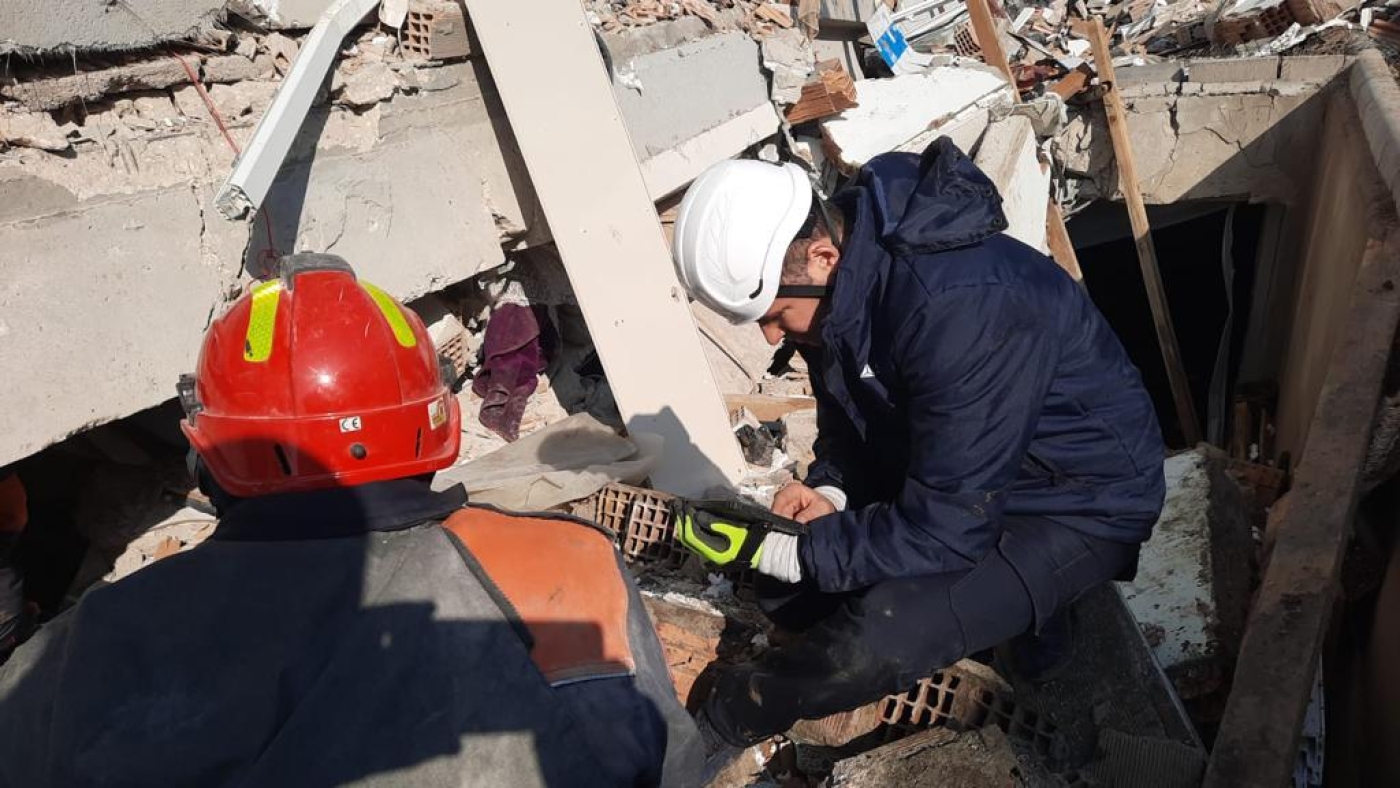
A search and rescue worker holding a simple electronic tablet detected a woman under the rubble in the earthquake-hit Antakya in Turkey on Wednesday. After three hours of observation and digging, she was taken out alive, according to eyewitnesses speaking to Middle East Eye.
Turkish search and rescue teams are racing against time to save thousands of survivors who are stuck under the rubble in 10 cities across the country since Monday’s quakes.
The teams often have difficulty detecting the people underneath the concrete blocks pancaked on top of each other, and they try to locate the victims often by shouting at them.
Now a Turkish state defence company has started to deploy a special system to find out the whereabouts of the survivors by using something they call DAR (Through the Wall Radar).
STM, the producer of the DAR, usually sends this system to military and other security forces for their operations. But the same system can be used for disasters as part of the emergency response.
DAR works through a radar system that obtains 2D position information on the targets, either stationary or moving elements through the walls. It is usually used in closed areas where there is no visual access. DAR uses ultra-wideband signals to track the movements.
Turkish Red Crescent chief Kerem Kinik had warned that the first 72 hours were critical in search and rescue efforts but pointed to complications of “severe weather conditions”. The combined death toll both in Turkey and Syria is now well over 11,700.
‘Small and simple’
A Turkish soldier who is familiar with the DAR system told Middle East Eye that it could detect rhythmic frequencies like heartbeats or could be used to analyse the victim’s surroundings. “It is a small and simple device that is easy to use during disasters,” the soldier added. “It could help a lot.”
DAR’s nominal range is 22 meters but in the Antakya operation, the female survivor was detected within 2.5 meters depth from the surface.
The system works in two legs: one device is placed on the concrete and a second tablet is held by the operator to analyse the data transmitted by the radar. The system detects movements and the space within the rubble, and measures the distance between the trapped people.
STM told MEE that it would overturn every piece of the equipment for the emergency response in the coming days.
Several countries across the world have joined the search and rescue efforts, such as Greece, Israel, Lebanon, Japan, Poland, Hungary and France. Dozens of countries also offered help by sending equipment and basic supplies.
However, experts believe the death toll in Turkey, which stands around 12,000, will continue to rise as the collapsed buildings are still full of bodies.
Turkish President Recep Tayyip Erdogan on Wednesday acknowledged “shortcomings” in his government’s response to the earthquake.
“Of course, there are shortcomings. The conditions are clear to see. It’s not possible to be ready for a disaster like this,” Erdogan said in his most direct response yet to accusations that his government failed to supply a sufficient number of rescuers and aid.
Multiple residents in the disaster zone complained that state agencies have failed to arrive in time with food, tents or equipment to search for trapped survivors.
Source: MEE











Add Comment